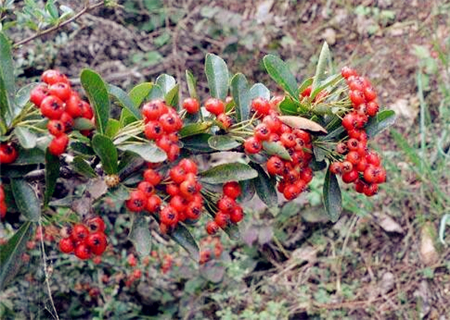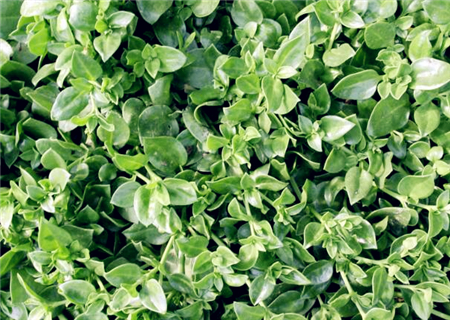When will the red leaf Photinia of Rosaceae be sown? How to plant it? What are the effects?
Red leaf heather is a general term for hybrid species of heather genus of Rosaceae. It is an evergreen small tree. Its new leaves are red in spring, green in summer, red in autumn, winter and spring. So how many months does Rosaceae red-leaf heather sow? How to grow? What are the effects?

1. How many months does red leaf heather sow?
Red leaf heather seeds are generally selected in spring from March to April is the best sowing time. Planting red leaf heather seeds needs to be tidied up in advance. The planting soil is mainly fertile, loose, acid-neutral soil, easy to irrigate and good drainage. Fertilization can be applied per acre prior to planting. At the same time, pesticides are used to effectively treat underground pests. After ploughing, the soil will be leveled and tidy, drainage ditch will be opened, and seedbed treatment will be done. If you sow in spring, you can transplant seedlings from October to November in autumn. The transplanting should be determined according to the local climatic conditions. The planting spacing should be determined according to the seedling retention time and cultivation objectives. For example, plan to plant annual shrubs according to different row spacing. After transplanting seedlings, you need to carefully lose packaging materials and nutrients to ensure the integrity of the root system. Use fine soil to accumulate roots and help the root system get good stretch.
2) How to grow?
1, the purchase of seedlings When purchasing seedlings, we must choose a supplier with good reputation and quality after-sales service to ensure the purity of the variety and reduce production risks. For example, Zhejiang Senhe Seed Industry Co., Ltd. is a large-scale company developing Photinia rubra in China at present. Its seedling raising technology is leading. The seedlings provided are high-quality container seedlings. The product consistency is good, the root system is developed, especially the transplanting with substrate does not hurt the root, the survival rate is almost 100%, and the seedlings grow rapidly after transplanting.
2. Selection and arrangement of nursery land The soil of planting land should be loose, fertile, slightly acidic to neutral, easy to irrigate and well drained. Before planting, 3000 kg of decomposed manure and 50 kg of calcium superphosphate shall be applied per mu, the soil tillage depth shall be more than 25 cm, and pesticides shall be used to control underground pests. After ploughing, the soil will be leveled, drainage ditch opened, do seedbed, bed width of about 1 meter.
3. Seedling transplanting is generally carried out in March-April in spring and October-November in autumn, which should be determined in combination with local climatic conditions. The planting spacing depends on the nursery time and cultivation objectives. If the plan is to cultivate annual shrubs for sale, plant spacing of 35 cm ×35 cm or 40 cm ×40 cm is appropriate, about 3000 plants per mu. When transplanting seedlings, carefully remove the packaging or nutrient bowl to ensure the integrity of the root soil ball, dig holes at fixed points; use fine mounds on the roots, stretch the roots, and gently compact them. After planting, the root fixing water shall be poured thoroughly in time.
4, cultivation management in 3-4 days after transplanting to water once, after every 10 days or so to water once; in case of continuous rain, to timely drainage. After about 15 days, the seedlings can be fertilized after the seedling stage. In spring, urea is applied about 5 kg per mu every half month; in summer and autumn, compound fertilizer is applied once every half month, 5 kg per mu; in winter, decomposed organic fertilizer is applied once, 1500 kg per mu, and it is better to apply it in furrows. Fertilization should be based on the principle of thin fertilizer and frequent application. It should not be used too much at one time to avoid damaging roots and burning seedlings. Weeding and loosening should be done in time.
5. The resistance of red leaf heather to pest control is strong, and no destructive pests have been found. However, if not properly managed or nursery environment is poor, gray mold, leaf spot disease or by scale insects may occur. Botrytis cinerea can be prevented by spraying 50% carbendazim 1000 times solution, and 50% zineb 800 times solution can be used for prevention and control during the onset period. Leaf spot disease can be controlled by 300-400 times solution of 50% carbendazim or 300-400 times solution of thiophanate. Scale insects can be sprayed with dimethoate emulsion 200 times or 800-1000 times.
6, out of the garden when the seedlings grow to the green specifications can be out of the garden. Water should be poured once a week before nursery, which is conducive to seedling emergence. The soil ball should be as big as possible when seedling is raised, and it should be wrapped with rice straw soaked in water. 5 or 10 finished seedlings are stacked in a bundle and stacked on a transport vehicle covered with tarpaulin.
III. What are the functions?
1, Heather as a herbal medicine, its leaves also have a very wide range of uses. For traumatic injuries, the leaves of Heather are crushed to extract juice and smeared on the surface of traumatic injuries, which can play an anti-inflammatory, analgesic and rapid wound healing effect.
2, promote defecation, heather leaves soaked in water to drink, can effectively promote intestinal digestion, for some long-term constipation, you can try to take this method to solve constipation.
3, warm kidney aphrodisiac, heather leaves, for male aphrodisiac effect is also very obvious.
Time: 2019-03-19 Click:
- Prev

How much is the price of rescue food "fire thorn fruit" per jin? What season is suitable for planting? When does it usually blossom?
Hippophae rhamnoides is also known as food for the rescue army and water canister. Rosaceae, evergreen shrub, is a medicinal, edible and ornamental multi-purpose flower and fruit plant, which looks at flowers in spring and fruit in winter. So how much is the price of Firethorn fruit per jin? What season is suitable for planting? When does it usually bloom?
- Next

How much is the market price of the medicinal plant andrographis paniculata? How do you plant seeds? What's the difference between Tian Qi and Tian Qi?
Andrographis paniculata, also known as spring lotus autumn willow, at the first sight, olive nuclear lotus, gentian grass, golden vanilla, golden ear hook, Indian grass, bitter grass and so on. Medicinal plants have the effects of heat-clearing and detoxification, anti-inflammation, detumescence and pain. So how much is the market price of andrographis per jin? How do you plant seeds? What's the difference between Tian Qi and Tian Qi? It is understood that
Related
- Fuxing push coffee new agricultural production and marketing class: lack of small-scale processing plants
- Jujube rice field leisure farm deep ploughing Yilan for five years to create a space for organic food and play
- Nongyu Farm-A trial of organic papaya for brave women with advanced technology
- Four points for attention in the prevention and control of diseases and insect pests of edible fungi
- How to add nutrient solution to Edible Fungi
- Is there any good way to control edible fungus mites?
- Open Inoculation Technology of Edible Fungi
- Is there any clever way to use fertilizer for edible fungus in winter?
- What agents are used to kill the pathogens of edible fungi in the mushroom shed?
- Rapid drying of Edible Fungi

